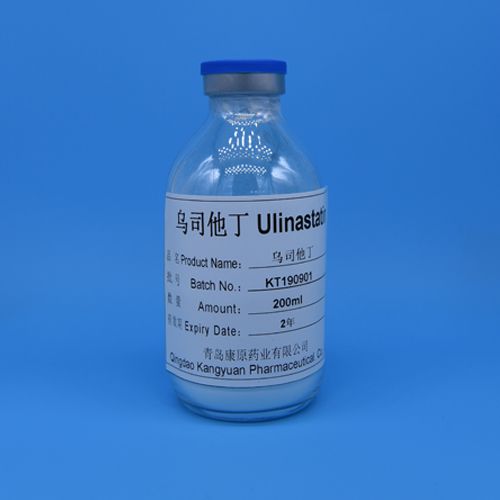Ulinastatin is a glycoproteolytic enzyme inhibitor extracted and refined
from fresh urine of healthy male adults, also known as urinary trypsin
inhibitor. It is composed of 143 amino acids, with a relative molecular weight
of about 67 000, and belongs to the Kunits type, a broad-spectrum and efficient
protease inhibitor widely existing in nature. No immunogenicity, high safety.
This product has a variety of clinical USES.

This product really has a variety of action mechanisms and pharmacological
effects:
(1) on the elastic protease, trypsin, fibrinolytic enzyme and other protein
hydrolase and hyaluronidase, amylase and lipase sugar and lipid hydrolase enzyme
has inhibitory effect, the product break down to form the low relative molecular
mass of the component also has a strong inhibition of proteolytic enzyme, so it
has exact curative effect on treatment of acute pancreatitis;
(2) with a stable lysosomal membrane, lysosomal enzyme release inhibition,
inhibition of myocardial inhibitory factor (MDF) production, scavenging oxygen
free radicals and inhibition of inflammatory mediators release role, so can be
used in the treatment of acute circulatory failure;
(3) Improve the immune function decline, protein metabolism abnormality and
renal dysfunction caused by trauma and surgical stimulation, so as to prevent
and treat the damage to internal organs and cells caused by surgical stimulation
and improve the circulatory condition when shock.
After 15 to 60 minutes of intravenous injection, the product reached its
peak value in the stomach, small intestine, colon, pancreas and gallbladder.
Gastrointestinal distribution 2 h after administration accounted for
approximately 12% of the dose. The blood concentration decreased linearly within
3 hours after administration, and the elimination half-life was 40 minutes. This
product is not bound to plasma protein and is mainly metabolized by the kidney.
After 12 hours of administration, it is excreted in urine and feces (73% and
2.3%, respectively), and at 72 hours, 83% and 4.1%, respectively. At 0.5 hours,
it is mainly discharged in the original form in urine, and almost all of it is
the degradation product in urine at 4 hours.